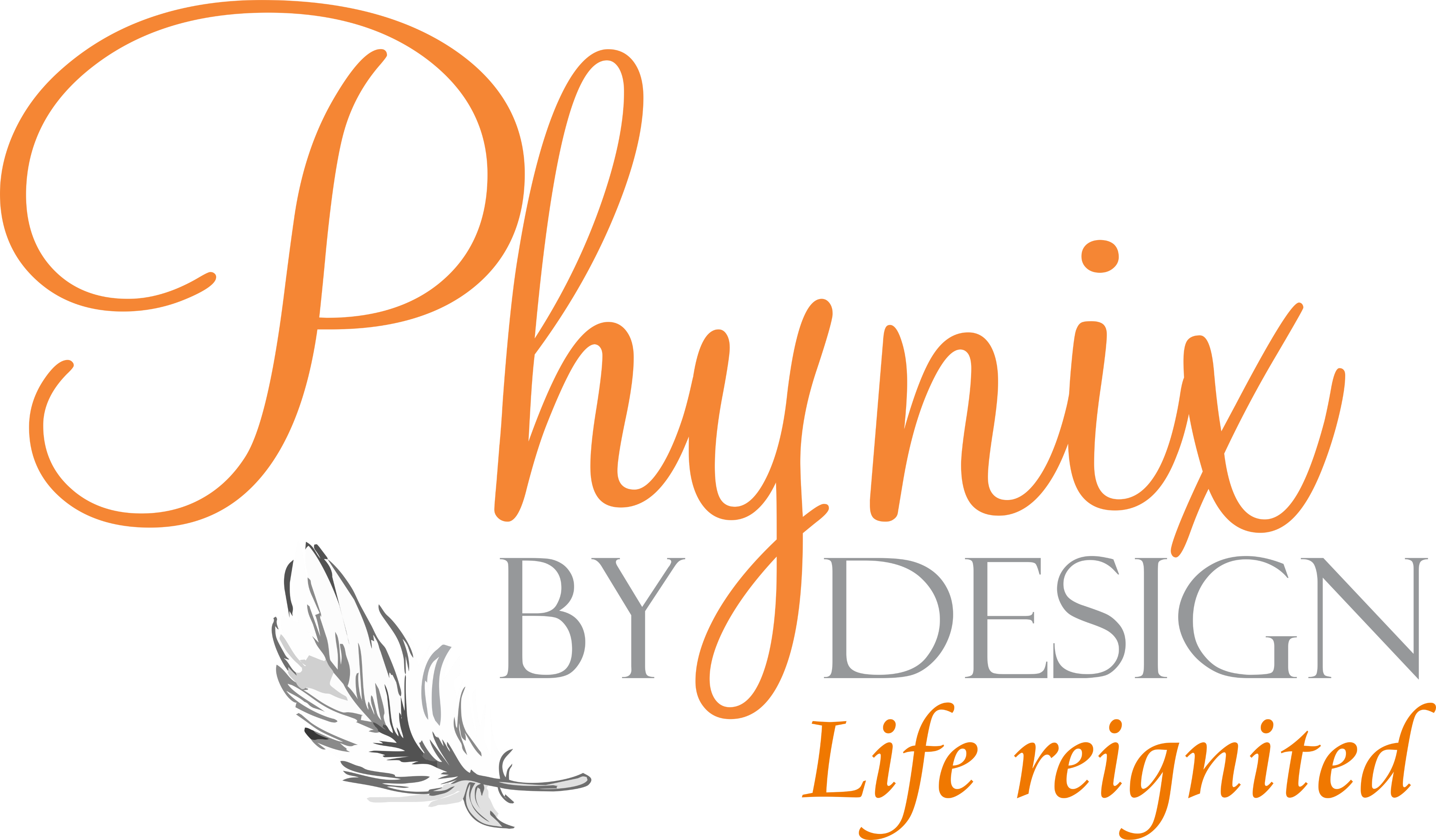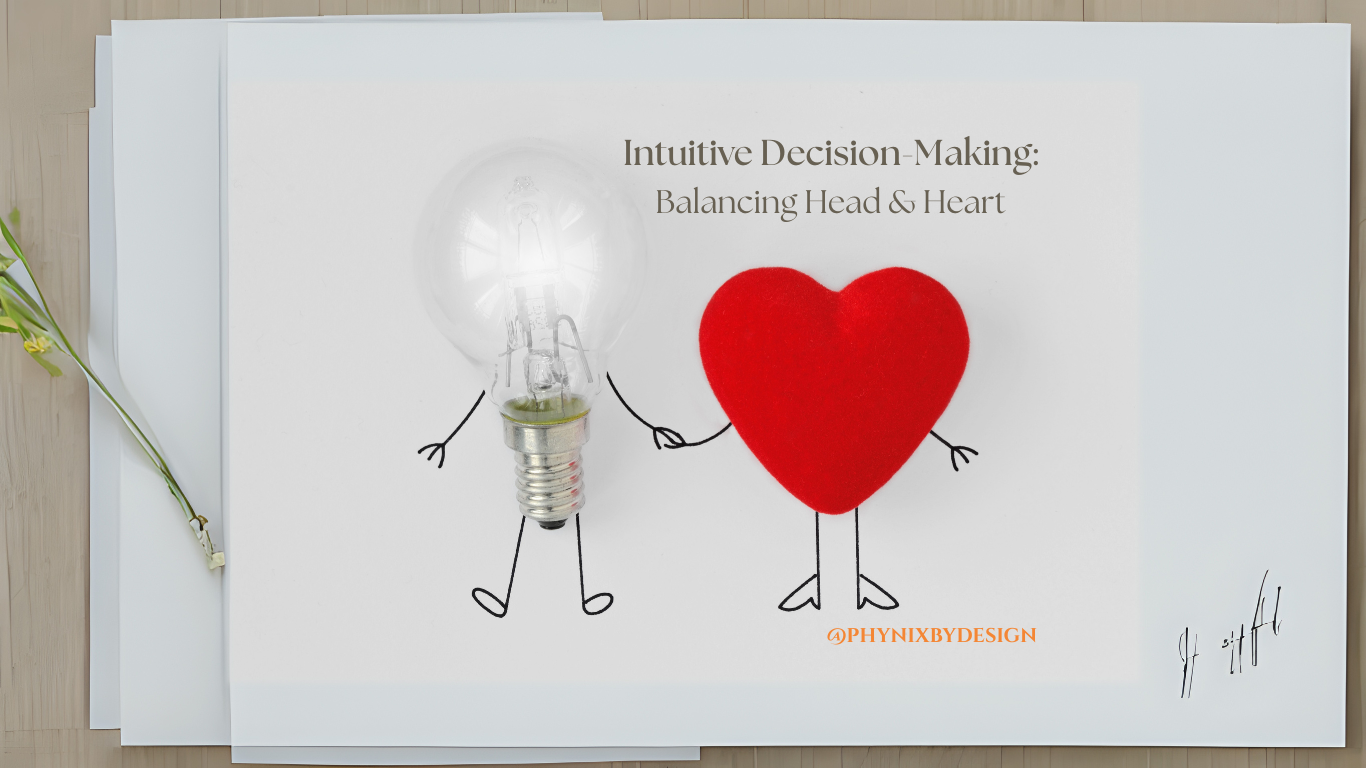Hello again!
How has your exploration of inner wisdom been unfolding? I’ve been thinking about you and the subtle signals of guidance you might be discovering as you learn to trust the intelligence that lives within your body and heart.
This week, we’re diving into the practical heart of this work – how to actually use your inner wisdom in making decisions, both small and significant. Rather than seeing intuition and analysis as opponents, we’ll explore how they can work together as partners in creating more aligned choices, while also addressing the common blockers that can interfere with clear guidance.
The Integration of Intuition and Analysis
Many of us have been conditioned to believe we must choose between logical thinking and intuitive guidance, as though they were opposing approaches. But the most powerful decisions often emerge when we honour both – using analysis to gather information and evaluate options, while allowing intuition to reveal the wisdom that goes beyond what can be captured in pros and cons lists.
I remember working with a client – let’s call her Emma – who was facing a major career decision between two excellent opportunities. On paper, one position clearly offered more prestige and financial reward. But when she created space to check in with her intuition, she felt consistent physical contraction when imagining that role, and expansion when considering the apparently “lesser” option.
The challenge? Emma’s inner critic kept dismissing these signals as “just fear” or “being impractical.” We worked together to help her distinguish between authentic intuition and the anxiety that often clouds our decision-making. By honouring both the analytical assessment and her intuitive knowing, she chose the path that ultimately brought her both success and fulfillment – something a purely logical approach might have missed.
Understanding What Blocks Our Wisdom
Before we can effectively use our inner guidance, it’s helpful to recognize the common patterns that can interfere with clear perception. Think of these as “static” on your inner radio station that makes it harder to tune into your wisdom’s frequency.
Through years of supporting people in developing their inner guidance, I’ve noticed several patterns that frequently create interference:
Mental Overwhelm: When we get caught in analysis paralysis, trying to figure everything out logically, we can lose access to the simpler knowing that often arises first.
Fear of Making Mistakes: The pressure to make “perfect” decisions can create so much tension that we lose touch with our natural discernment.
External Pressure: When we’re highly attuned to what others think we should do, our own inner voice can get drowned out.
Past Decision Wounds: If following intuition led to unexpected challenges before, we might unconsciously shut down our receptivity.
Information Overload: Constant digital input can overwhelm our subtle sensing capacity.
Time Pressure: Wisdom often needs a moment of stillness to emerge, but our fast-paced world rarely provides these pauses.
The Fear vs. Intuition Question
One of the most common questions I receive is: “How do I know if what I’m feeling is intuition or just fear?” This distinction is crucial because they can sometimes feel similar initially.
Here’s what I’ve observed about the differences:
Authentic intuition typically:
- Feels calm and centered, even when delivering challenging information
- Appears as simple knowing without elaborate justification
- Remains consistent when you return to stillness
- Creates a sense of expansion or rightness in your body
Fear-based thinking typically:
- Creates physical tension and mental agitation
- Involves worst-case scenario thinking and “what-ifs”
- Changes depending on external circumstances
- Generates urgency and pressure to act immediately
Both deserve your attention – intuition as guidance and fear as information about what might need healing or protection.
This Week’s Integrated Practice: Balanced Decision-Making
Here’s a practical approach that combines clearing interference with balanced decision-making:
1. The Five-Minute Clearing Practice
When facing a decision, begin by clearing the static:
- Find a quiet space and take several deep breaths
- Name any interference you’re experiencing: “I notice anxiety/overthinking/pressure”
- Breathe space around this experience without trying to change it
- Ask: “Beneath this interference, what does my wisdom know?”
- Listen with gentle patience for whatever emerges
2. Gather Both Types of Information
Analytical Information:
- Research relevant facts and options
- Consider practical implications and logistics
- Weigh pros and cons thoughtfully
Intuitive Information:
- Notice your body’s signals of expansion or contraction with each option
- Pay attention to energy levels when imagining different paths
- Observe what feels aligned with your deeper values
- Notice any images, words, or knowings that arise in stillness
3. Look for Patterns and Alignment
The most powerful decisions often emerge when both your analysis and intuition point in the same direction. When they diverge, this becomes valuable information too:
- If analysis says yes but intuition says no, explore what your body wisdom might be sensing that your mind hasn’t considered
- If intuition says yes but analysis raises concerns, consider whether there might be creative solutions to practical challenges
- Sometimes the timing isn’t right even when the direction is clear
4. Start Small and Build Trust
Practice this integrated approach with lower-stakes decisions first:
- Choose which route to take on a familiar walk
- Decide what to have for lunch by checking both hunger and craving
- Pick weekend activities that balance practical needs with what feels nourishing
- Select books or movies through both interest and intuitive attraction
5. Keep a Wisdom Journal
Track your experiences to build evidence of your guidance’s reliability:
- Note when you receive clear guidance and what it suggested
- Record what happened when you followed or ignored this guidance
- Observe what conditions supported clear reception
- Notice patterns in how your wisdom communicates
Working With Self-Doubt
As you begin trusting your inner wisdom more, you might encounter internal voices that question your guidance. This is completely normal and doesn’t mean you’re doing anything wrong.
When self-doubt arises:
- Acknowledge it without letting it make decisions for you
- Remember that building trust is a gradual process
- Start with decisions where the stakes feel manageable
- Gather supportive people who honour your inner wisdom journey
Be patient with the learning process.
Your Week 3 Challenge
Choose one decision you’re currently facing – ideally something meaningful but not overwhelming – and approach it with this integrated method:
- Begin with the clearing practice to reduce interference
- Gather both analytical and intuitive information
- Notice where they align or diverge
- Make your choice honouring both sources of wisdom
- Document your process and outcomes
Remember, this isn’t about achieving perfect decisions but about developing a more balanced, trustworthy approach to life’s choices.
Join the Journey
The most profound wisdom often emerges not from choosing between head and heart, but from creating space where both can inform your choices. Your rational mind offers valuable analysis and planning, while your intuition provides access to information that logic alone cannot reach.
As you practice this integration, you might discover that what once felt like competing voices become collaborative partners in creating a life that feels both practically sound and deeply aligned.
Throughout this week, I’ll be sharing practices on social media to support your exploration of body wisdom. Follow along on Instagram, Facebook, or LinkedIn for regular inspiration and practical exercises.
I’d love to hear about your experiences with this balanced approach to decision-making. What helps you distinguish between fear and intuition? How do you create space for both analysis and inner knowing?
Remember, every master of inner wisdom has worked with these same challenges. The interference isn’t a sign that you lack wisdom – it’s simply part of learning to tune into your most authentic guidance more skilfully.
With trust in your expanding wisdom,
Gemma-Lee
About the Author:
Gemma-Lee Harvey is a Holistic Counsellor and Lifestyle Coach based on Australia’s Sunshine Coast. With a diverse background spanning psychology, business, counselling, and coaching, she creates a nurturing space for exploring one’s full potential. Her gentle yet practical approach kindles the transformative spirit within, guiding individuals through life’s challenges as they rise through empowerment.
Contact:
🌐 www.phynixbydesign.com.au
☎ 07 5493 6742
📱 0448 562 814
🏢 Brightwater Wellness Hub, Shop 7E 69-79 Attenuata Drive, Mountain Creek QLD 4557

